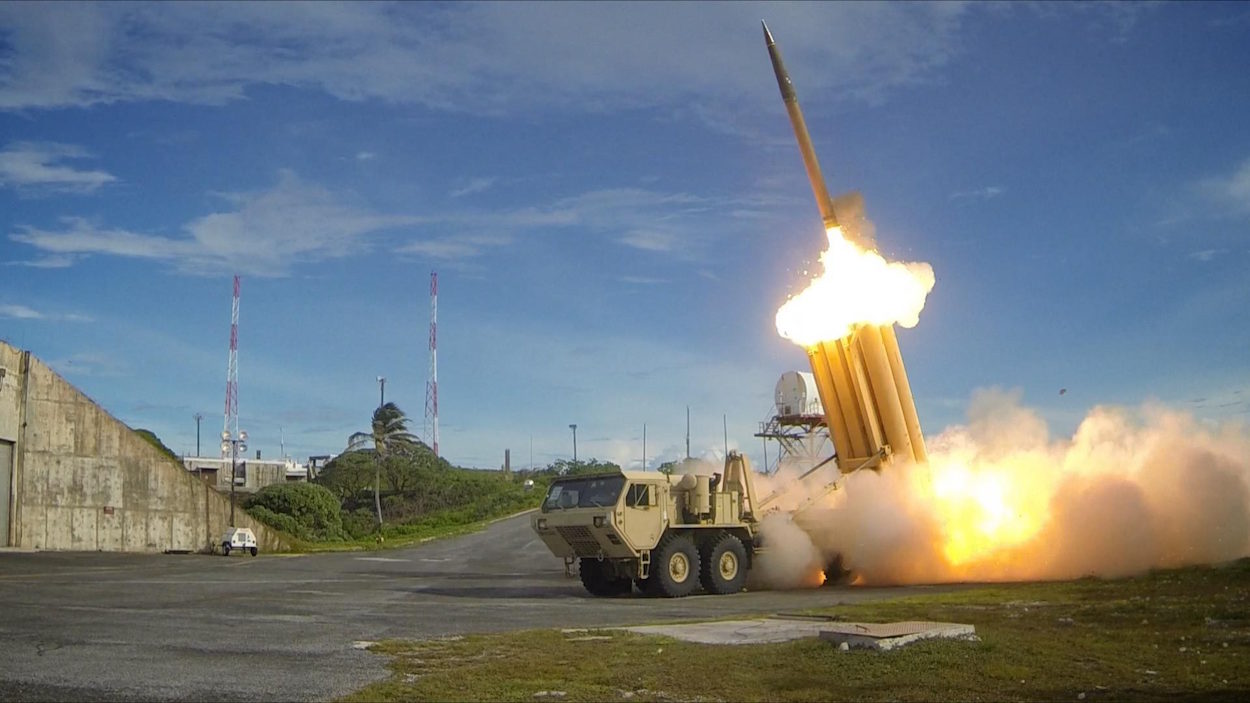by Brian Hioe
語言:
English
Photo Credit: US Navy
NEWS OF AN arms deal between the US and Taiwan will no doubt prove reassuring to those who bank on America as Taiwan’s guarantor of its existing de facto independence from China. Nevertheless, in truth, skepticism is needed. As the first US-Taiwan arms deal to occur under the Trump administration, what is called for is skepticism and continued wariness rather than a sense of relief, and this only indicates a temporary extension of the present status-quo of US-Taiwan relations rather than the Trump administration stepping up support of Taiwan.
In particular, US-Taiwan arms deals are seen by many as an indicator, though far from a guaranteed one, of a continued obligation by America to defend Taiwan in case of Chinese attack. Likewise, a US-Taiwan arms deal, apart from providing Taiwan with the weaponry needed to serve as a deterrent against China, is also a sign of American interests with regard to Taiwan. Obviously, if Taiwan is a large purchaser of American military supplies, America has an interest in defending Taiwan against Chinese attack, although this also has often left America open to the accusation that it is stringing along Taiwan in order to sell more arms to Taiwan while refusing to commit firmly to Taiwan’s defense. America, after all, continues to leave it commitments to Taiwan up in the air in the name of strategic ambiguity.
 THAAD firing during an exercise in 2013. Photo credit: US Department of Defense/CC
THAAD firing during an exercise in 2013. Photo credit: US Department of Defense/CC
In examination of the arms deal, it is probably apt to conclude that it is a temporary maintenance of the status quo rather than indicating anything new. The present arms deal is a $1.4 billion arms deal. Although the Obama administration nixed a second arms deal to Taiwan originally scheduled for December of last year which was to be $1.8 billion, a previous arms deal in 2011 was $5.8 billion. Moreover, the arms deal does not include some of the equipment Taiwan asked for.
For example, Taiwan did not ask for the Terminal High Altitude Area Defense system which could prove highly valuable in defending Taiwan from the possibility of decapitation strikes from China, a key threat which would remove many of the obstacles for China in terms of China’s need to overcome an organized military resistance in a possible invasion of Taiwan by removing the coordination of Taiwan’s military and political leadership. This was likely because Taiwan did not wish to push China over the edge, as has been seen with South Korea, in which THAAD has been installed but this has proven highly provocative of China. As such, Taiwan asked instead for F-35 fighter jets, an advanced weapon for Taiwan nonetheless. But these, too, were not granted under the new arms deal.
Some in the past have taken the politically hyperbolic rhetoric of the Trump administration as possibly meaning that it wishes to step up support of Taiwan, and continue to cling to this wishful scenario. This occurs in spite of the Trump administration reversing course instead towards a relatively soft stance on China following Trump’s meeting with Chinese president Xi Jinping and the rise of the Kushner faction within the Trump administration. Nonetheless, going off of the contents of the arms deal, this arms deal should not be seen as indicating a stronger stance in support of Taiwan on the part of the Trump administration. Again, this arms deal merely indicates another temporary extension for the US-Taiwan status quo.
China has, unsurprisingly, reacted badly to the arms deal. However, at the same time, as with past arms deals, this is likely simply political theater, in which China realizes that this new arms deal does not mean anything particularly groundbreaking for US-Taiwan relations but is obligated to express its displeasure nonetheless.
 Jared Kushner. Photo credit: Lori Berkowitz/CC
Jared Kushner. Photo credit: Lori Berkowitz/CC
Yet there are in fact mysteries to be clarified about the sudden approval of this arms deal. Of the competing political interests and political factions within the Trump administration, which is the one behind the arms deal? It seems unlikely to be the Kushner faction, centered around Trump’s son-in-law Jared Kushner, who is more pro-China because of his family’s business interests in China. The far-right-wing anti-China Bannon faction, which in fact may see war with China over the South China Seas as an inevitability, still seems to be an increasingly marginalized force within the Trump administration.
Is it then Rex Tillerson and his relatively establishment State Department who is behind the arms deal? That seems like the most likely possibility, given news reports claiming that Tillerson is currently preoccupied with damage control from Jared Kushner’s actions, whether in the Middle East or elsewhere. Although Tillerson’s State Department also seems to be relatively marginalized within the Trump administration, it may have been able to force through the arms deal as a stopgap measure on the issue of US-Taiwan relations. Nevertheless, of course, Tillerson and his State Department still face the continual threat of their work being undone by less establishment actors within the Trump administration or by the president himself. Uncertain times seem set to continue for Taiwan then.

